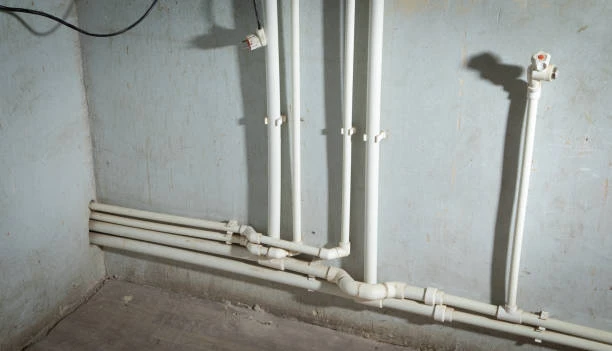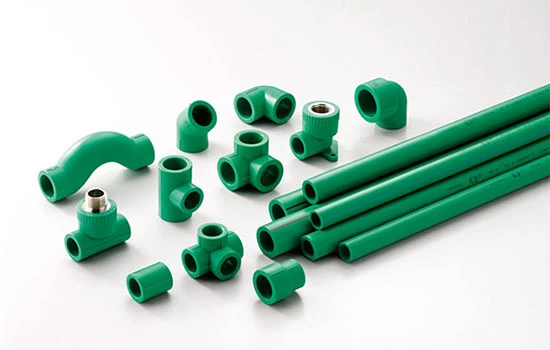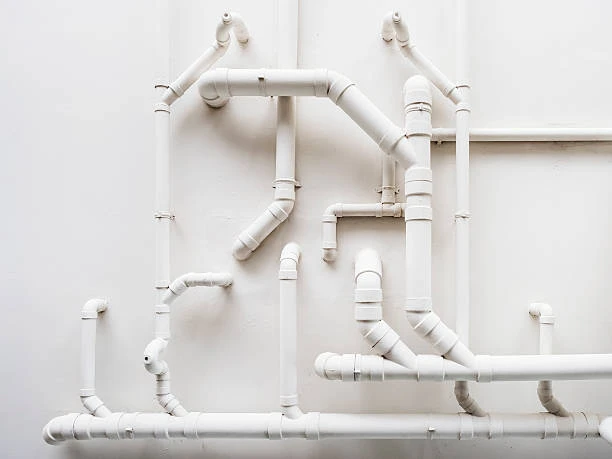Introduction to PPR Pipe Fittings
In the world of modern plumbing, (Polypropylene Random Copolymer)PPR pipe fittings have become a go-to solution for many professionals. Known for their high durability, resistance to temperature changes, and eco-friendliness, PPR pipe fitting are widely used in residential, commercial, and industrial plumbing systems. But what exactly makes them stand out in plumbing applications, and why should you consider using them? Let’s explore the characteristics and various uses of PPR pipe fitting in detail.
Characteristics of PPR Pipe Fittings
High Durability and Flexibility
PPR pipe fittings are made from a high-quality plastic polymer, which provides excellent durability and flexibility. These fittings can handle the stresses of high-pressure water systems without breaking or deforming. This is why they are commonly used in systems where both cold and hot water is distributed.
Corrosion Resistance
Unlike metal pipe fitting, PPR is highly resistant to corrosion. This makes it an ideal choice for plumbing systems that frequently transport water, especially in areas with hard water or high mineral content. With PPR, the risk of rust and chemical reactions is significantly reduced.
Temperature Resistance
One of the standout features of PPR pipe fitting is their ability to withstand extreme temperatures. Whether you’re dealing with freezing cold water or high-temperature systems, PPR fittings can handle both with ease, making them versatile in various environments.
Environmentally Friendly Material
PPR is also an environmentally friendly material. It is 100% recyclable, which reduces its environmental impact, and it has a relatively low energy consumption during production compared to other materials like copper or PVC.
How PPR Pipe Fittings Differ from Other Materials
Comparison with PVC Pipe Fittings
PPR pipe fittings are often compared to PVC (Polyvinyl Chloride) fittings. While both are plastic-based, PPR is more flexible and resistant to heat. PVC is typically used for cold water and drainage systems, but it doesn’t perform as well in hot water applications as PPR does.
Comparison with Copper Pipe Fittings
Copper has been a traditional choice in plumbing systems for decades. However, PPR pipe fitting offer a cheaper and corrosion-free alternative. Copper fittings are prone to corrosion, especially in systems with acidic water, which can lead to leaks over time. PPR does not have these issues, making it a preferred choice for long-term plumbing systems.
Comparison with CPVC Pipe Fittings
CPVC (Chlorinated Polyvinyl Chloride) is similar to PPR in that it can handle both hot and cold water systems. However, PPR is often preferred due to its longer lifespan and lower maintenance requirements. CPVC is more rigid and can be prone to cracking over time, while PPR remains flexible and durable.
Common Uses of PPR Pipe Fitting in Plumbing
Residential Plumbing Systems
PPR pipe fittings are widely used in home plumbing systems, particularly for hot and cold water distribution. Whether it’s for bathroom installations, kitchen plumbing, or water heating systems, PPR offers reliable performance.
Commercial and Industrial Applications
In addition to residential use, PPR fittings are popular in larger-scale projects such as office buildings, hotels, and industrial facilities. Their ability to handle high pressure and temperature variations makes them a great choice for commercial environments.
Hot and Cold Water Distribution
Thanks to their excellent temperature resistance, PPR pipe fittings are ideal for both hot and cold water distribution systems. This dual functionality makes them an extremely versatile choice for plumbing professionals.
Types of PPR Pipe Fitting
Elbows
Elbows are used to change the direction of the piping system, typically at 90-degree angles. PPR elbows are essential in routing piping through corners or around obstacles.
Tees
Tee fittings are used to join three sections of pipe together, creating a branch in the plumbing system. These are essential in complex plumbing layouts.
Couplings
Couplings connect two sections of pipe together, ensuring a secure and leak-proof joint.
End Caps
End caps are used to close off the ends of pipes, preventing water from leaking or escaping.
Installation Process of PPR Pipe Fitting
Welding Method
PPR pipe fittings are typically installed using a heat welding method. This involves heating both the pipe and the fitting and then pressing them together to create a permanent bond.
Fusing Process
The fusing process ensures a leak-free connection. When the pipe and fitting cool down, they form a seamless joint that is as strong as the pipe itself.
Tools Required for Installation
Installing PPR pipe fitting requires specialized tools, such as a pipe cutter and welding machine, which ensures that the pipes and fittings are properly aligned and bonded.
Advantages of Using PPR Pipe Fittings
Longevity and Reliability
PPR pipe fitting have a lifespan of up to 50 years, which makes them a reliable choice for long-term plumbing installations.
Cost-Effectiveness
While the initial cost of PPR fittings might be slightly higher than PVC, their long-term durability and low maintenance requirements make them a cost-effective option in the long run.
Easy Installation
The heat welding method used for PPR installations is relatively straightforward, reducing labor costs and installation time.
Maintenance of PPR Pipe Fittings
Cleaning and Inspection
Routine inspection and cleaning of PPR pipe fitting can help ensure that they remain in top condition. Any blockages or dirt should be cleaned promptly to avoid damage to the system.
Ensuring Pressure Stability
Checking the pressure within the system is crucial, especially in high-pressure environments. Make sure the system is stable to prevent leaks.
Repair Tips
In case of any damage, PPR pipe fitting can easily be replaced or repaired using the same heat welding process.

Environmental Impact of PPR Pipe Fittings
Recyclability of PPR Material
PPR pipe fittings are fully recyclable, making them an environmentally responsible choice. At the end of their lifespan, they can be repurposed rather than being disposed of as waste.
Energy-Efficient Production
The production of PPR pipe fitting is relatively energy-efficient compared to other materials like copper, which require more resources to produce.
PPR Pipe Fittings in Green Plumbing Systems
As the demand for eco-friendly and sustainable plumbing systems grows, PPR pipe fitting play a crucial role. Their recyclability, energy-efficient production, and long lifespan contribute to greener building practices.
Conclusion
PPR pipe fittings are a versatile and durable option for modern plumbing systems. Their ability to handle both hot and cold water, resistance to corrosion, and eco-friendly properties make them a popular choice in residential, commercial, and industrial applications. With a variety of fittings available and easy installation methods, PPR is a reliable solution for long-term plumbing projects.
FAQs
- What are PPR pipe fitting made of?PPR pipe fittings are made from polypropylene random copolymer, known for its durability and resistance to corrosion.
- What are the main advantages of using PPR pipe fitting?PPR fittings offer high chemical resistance, excellent thermal insulation, and a long lifespan, making them ideal for plumbing systems.
- Can PPR pipe fitting be used for hot water applications?Yes, PPR pipe fittings are suitable for both hot and cold water applications due to their high-temperature resistance.
- How are PPR pipe fittings joined?PPR fittings are typically joined using heat fusion techniques, which create a strong and leak-proof connection.
- Are PPR pipe fittings environmentally friendly?Yes, PPR fittings are recyclable and have a lower environmental impact compared to some other materials used in plumbing.


















